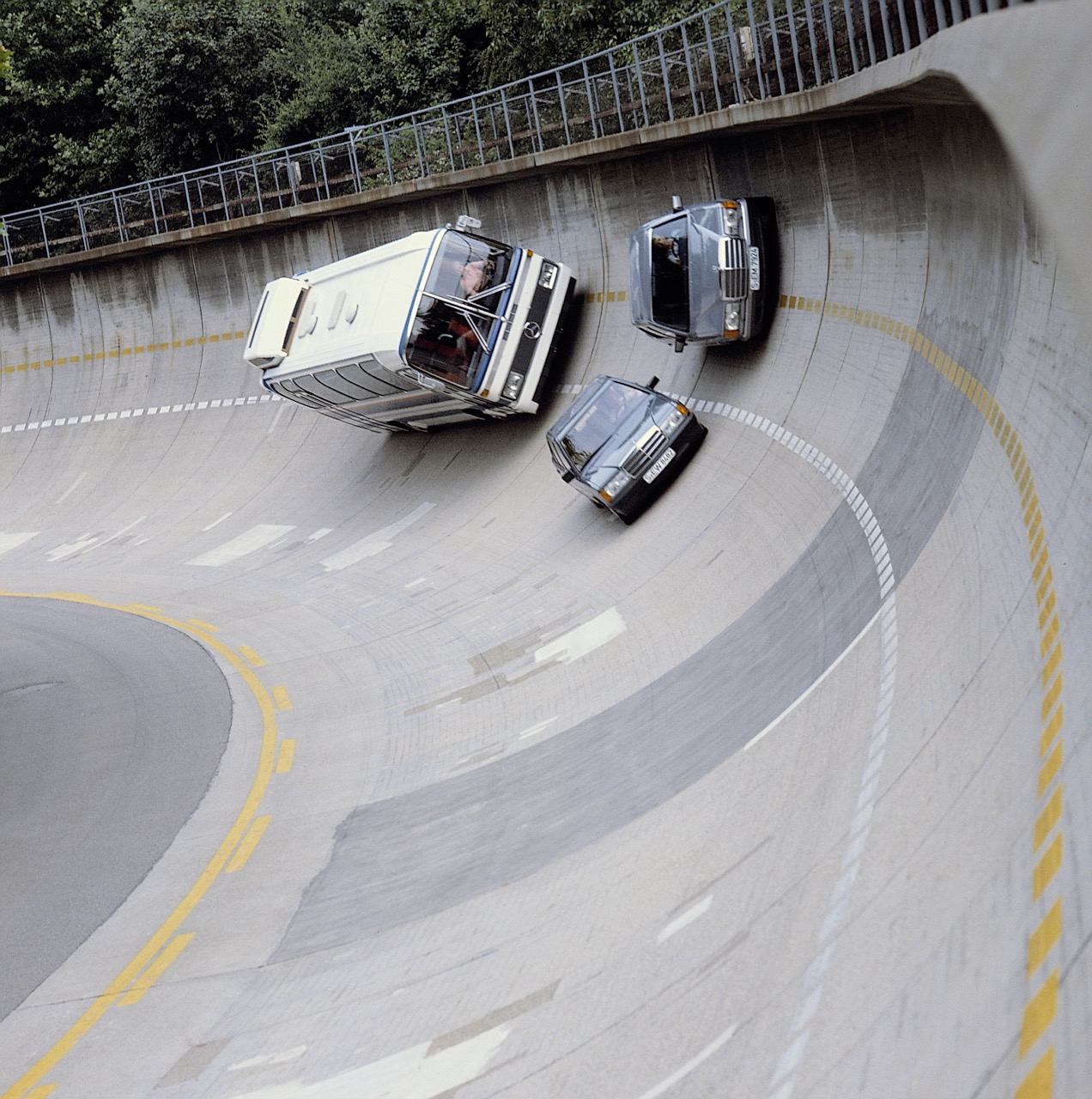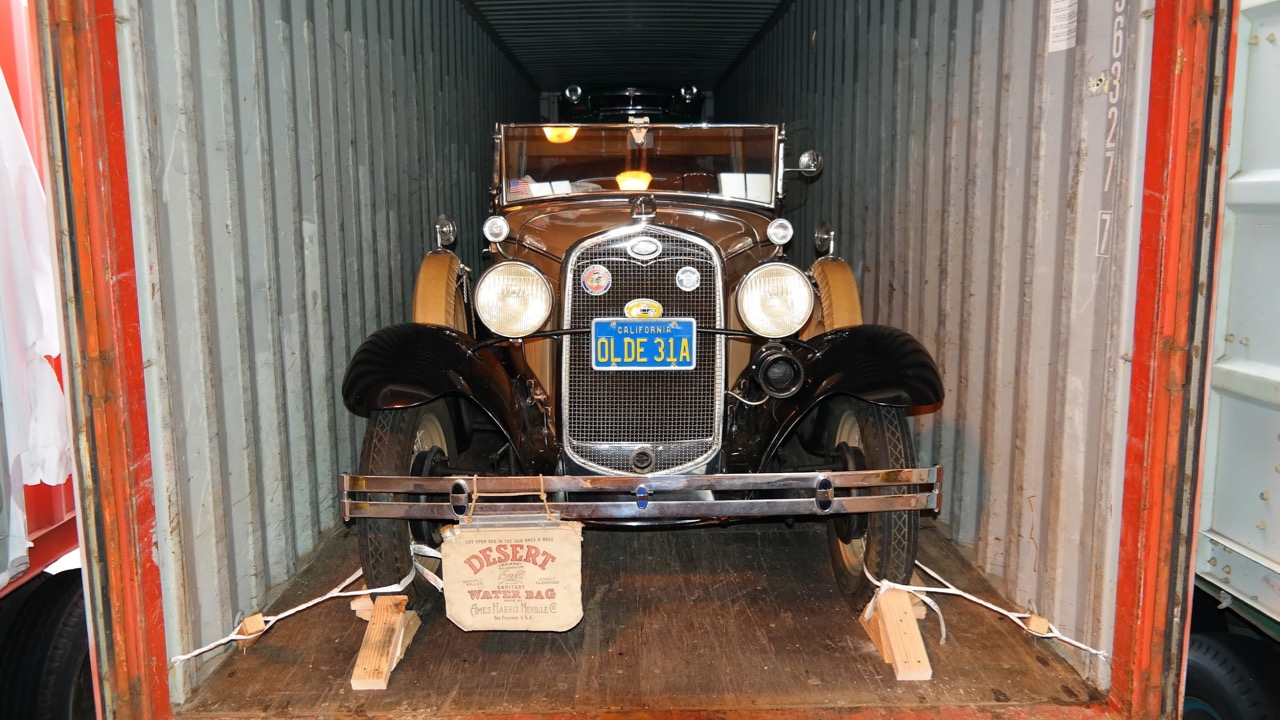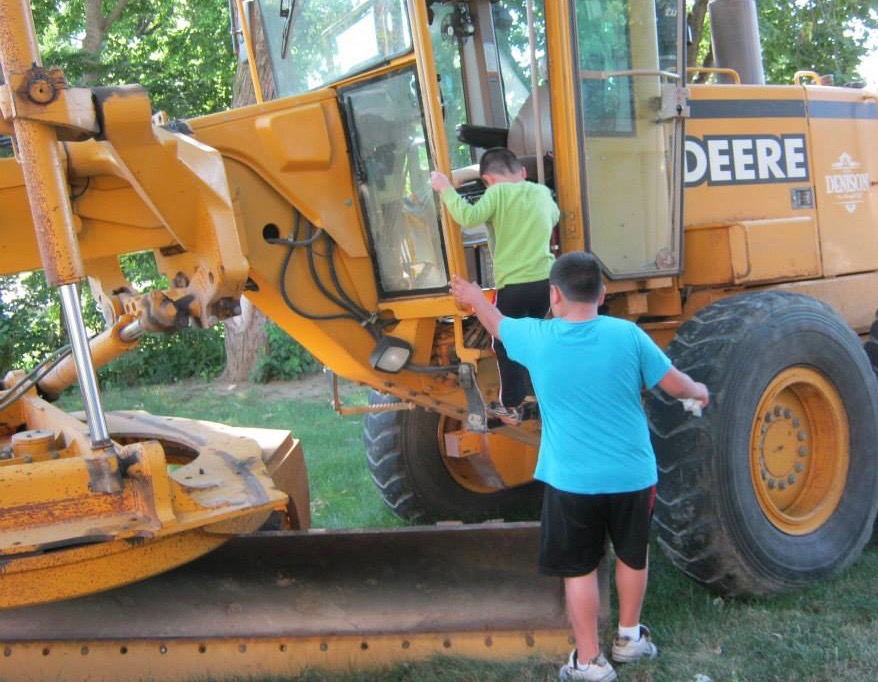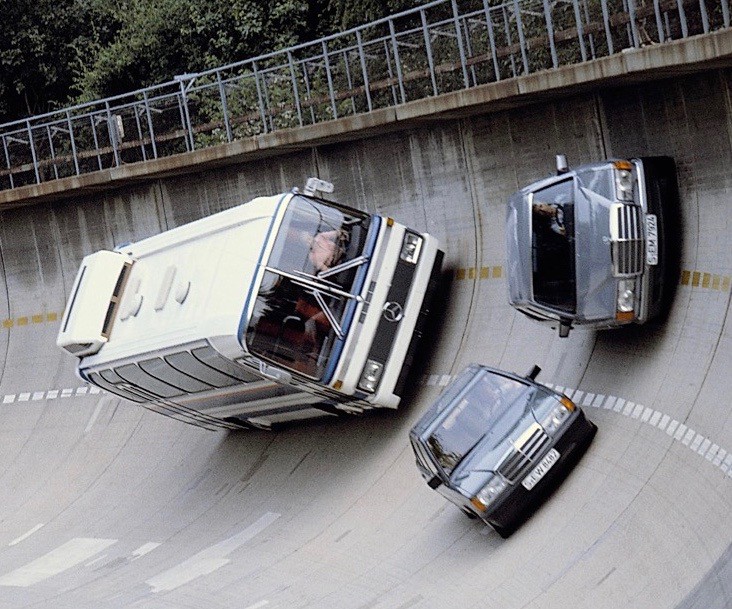
We were in Germany for the introduction of a new Mercedes-Benz, or perhaps it was one of the automaker’s press previews of the company’s newest technology. On second thought, I think it was a technology-based event because my recollection is that we had just watched a pre-production 500SL slammed into a solid wall as part of the crash-testing program all vehicles must endure before they can be sold to the public.
Regardless, we — the representatives of the American automotive press — climbed into a bus, and though we were headed toward our next stop, or perhaps even lunch, when the driver suddenly turned onto the Unterturkheim test track and accelerated.
Pedal to the metal isn’t something you normally think of doing in a bus, but here we were, and not on some freeway or even an autobahn but heading full bore in the high lane into Mercedes’ famed “wall of death,” the nearly vertically banked curve, as though we were an Olympic bobsled team, except this track was paved and our sled was a motorcoach.
On third thought, I’m guessing we were on our way to lunch, not from lunch, or there would have been a lot of cleanup to do to the bus’s interior.
What rekindled such memories was a news release from Mercedes’ parent Daimler noting that May 9 marks the 50th anniversary of the Unterturkheim test track. The track actually dates to the mid-1950s, but that was just the opening phase of the facility, with a major improvement and expansion opening in the spring of 1967.
Mercedes also revealed in its recent news release that at 150 km/h (a mere 93 mph) in the highest lane of the track, you can remove your hands from the steering wheel because “there are no longer any lateral forces impacting on the tires and the vehicle remains on track through the bend without any steering input. The driver’s weight (and that of other vehicle occupants) nevertheless rises by a factor of 3.1, pressing him or her into the seat.”

The Shipping News, automotive version update
Slightly more than half-a-million automobiles and motorcycles left the United States last year in shipping containers, and Dmitriy Shibarshin, marketing director for West Coast Shipping, estimates that around 30,000 of them were classic or collector vehicles.
West Coast handles about 20 percent of the collector car overseas shipping market, and Shibarshin notes that people in Belgium, France and Sweden are buying classics from Americans right now, while the overseas markets in the United Kingdom and Australia are in decline.
Rather than classics, most of the vehicles being shipped overseas are late-model or what we’d consider to be “used” cars. The largest single market for those cars is within the Western Hemisphere, though closely followed by the Middle East and Europe.

Museum offers ‘petting zoo’
Each year, Detroit-based car designers and the Detroit Institute of Ophthalmology stage Eyes on Design, a concours-quality car show held on Father’s Day at the Edsel and Eleanor Ford estate in Michigan. One of the features is a program that allows the visually impaired and blind to “see” the cars with their hands. FYI: The show celebrates its 30th anniversary this year
Along similar lines, American On Wheels museum in Allentown, Pennsylvania, stages its third annual “petting zoo” on May 6 from 10 a.m. until 3 p.m.
What’s an automotive petting zoo? Well, at the Wheels museum, it’s a gathering in the parking lot of heavy equipment from manufacturers including Mack, Peterbilt, Komatsu, etc., with children allowed to climb aboard for a hands (and feet)-on experience.

Cars & Coffee with a purpose
If you’re in southern Florida this weekend, I encourage you to attend the open house and Cars & Coffee car show being hosted by Jason Wenig and The Creative Workshop, a top-notch car-building and restoration business in Dania Beach. The event is being held as a fund- and awareness-raising benefit for the RPM Foundation, a group dedicated to preparing the next generation of automotive restoration and preservation craftsmen — and women.
As a bonus, The Creative Workshop will be unveiling its latest project, the 1915 Speedwagon Special.
British college offers classic car ownership classes
Like the RPM Foundation, there are those on the other side of the pond thinking about the future care of collector vehicles. Banbury and Bicester College is working with Bicester Heritage on two- and five-day courses on classic car ownership at the Heritage’s former RAF bomber base.
“Banbury and Bicester College’s classic car future-proofing courses will give the opportunity for those entering the world of historic vehicles or more experienced owners and drivers expert advice and tips for making the most of their machine,” Bicester Heritage said in its news release.
“Owning and running a classic car requires a basic mechanical knowledge, and Bicester Heritage and Banbury and Bicester College are looking to ease buyers’ initial fear of not being able to keep their pride and joy running in tip-top condition all year round.
“Two- and five-day courses are available, with the former offering the basics to beginners looking to understand the fundamentals of running a classic car. Key components will be covered, including oil and filter servicing, replacing and setting spark plugs, replacing contact breakers (points), checking brakes, and checking transmission oil and coolant.

“The five-day ‘intermediate’ course builds on everything from the two day program and takes the students’ knowledge to the next level. They will gain an understanding of how to assess large structural issues and be taught how to carry out a major vehicle assessment. On top of this, they’ll undertake several tasks that will prepare them for classic car issues in the future, including removing, assessing and refitting a petrol pump, checking and adjusting valve clearances and clutch operation.”
The Bicester Heritage facility is home to more than 30 collector car specialists, who already work with the college on apprentice programs to prepare future experts in their respective specialties.






Your bus/wall of death story reminds me of one snowy day when I was driving a bus in England. It was in Milton Keynes which is a planned city and I was turning onto a road with a constant radius right hand bend about a quarter mile long through a housing estate. This bend was slightly banked and I turned onto it from side road at the top of the banking.
The little buses they used there were like driving little sports cars so when the rear slid down the banking it was the easiest thing in the world to hold the angle for the next quarter mile. All conversation on the bus stopped dead while all the passengers looked where they were going through the side windows.
I reckon if any of the passengers had twigged that I was doing it on purpose my name would’ve been mud.